The story of Solomon and Sheba is well known as one of love and power. When we learn more of the story, we see how much affection and adoration Solomon had for his favorite Queen. As the story goes, King Solomon moved mountains to express that love for Queen Sheba. It appears these were mountains of sand and soil. These remain as long lines of great Hills today, which we can look on as symbols of love and grandeur than even that of the building of the Pyramids.
Solomon and Sheba’s Famous Meeting
The famous meeting of Solomon and Sheba describes the queen’s first entry to Solomon’s Palace.
“She was bidden to enter the Palace, and when she saw it she thought it was a pool of water, and bared her legs. But Solomon said, ‘It is a palace paved with glass.'”
Koran, Chapter of the Ant.
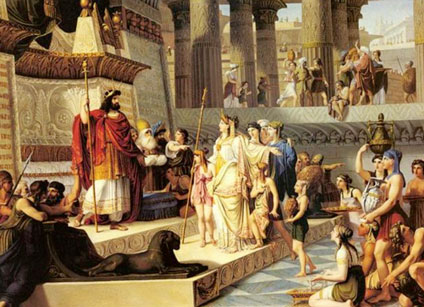
“Steadying herself on Solomon’s arm, she bent down and, removing her sandals modestly, lifted the hem of her robe and stretched out a toe to test the water. The King was taken back with surprise, fooled automatically into a momentary belief that she did believe a river in some way flowed through the hall. Now it was his turn to express confusion. ‘It isn’t water. They are only glass tiles.’ Then he saw that she was only teasing and stammered, “Well, some of my guests have thought it very true to life. But it is well done, isn’t it?”
The Tutankhamen Code.
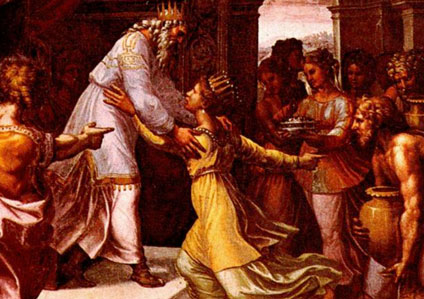
Finding Solomon’s Temple and Palace
Fragments of glazed tiles depicting water, fish, reeds, and birds have been found in the ruins of the ancient Palace of Ymn Htp III (Amenhotep III) at Malqata near Luxor. In “Out of Egypt,” British-Egyptian historian Ahmed Osman examined the findings in Luxur and believes that they all point to Pharaoh Ymn Htp III (Amenhotep III) as the legendary King Solomon. Ahmed Osman also identified Joseph as Solomon’s father-in-law.
The Book of 1 Kings leads us to believe that King Solomon‘s Temple and Palace were so grand and sumptuous that there should be some archaeological evidence for them. But nothing has ever been found in modern-day Israel, despite infinite digs over more than a century. The “luxurious” remains in Luxor not only match biblical descriptions, but many of the ancient walls and columns still stand, suggesting that Dynasty Kings David and Solomon, otherwise known in Ancient Egypt as Dayhut and Salim Amen, had built them.
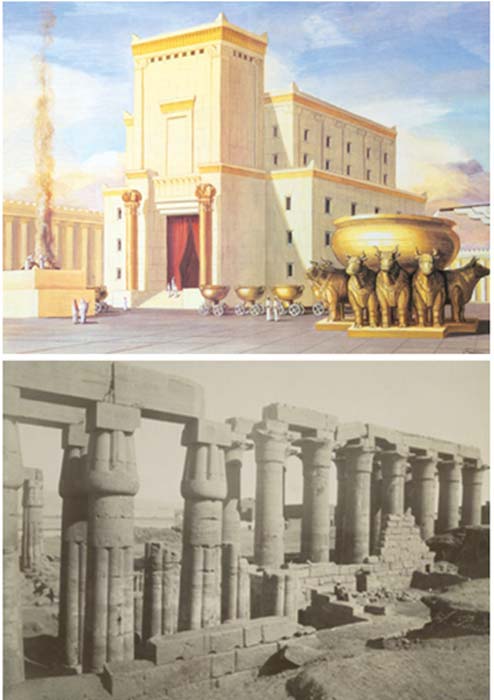
This contradicts long-held religious beliefs and traditions and is highly dependent on Muslim scholar Ahmed Osman’s perspective, which could also be flawed. This view also contradicts the biblical timing by about four centuries. It also suggests that Israel was, at one time, a large part of Egypt – a claim made by those who believe that the Book of 1 Samuel does indeed places Israel in Egypt.
Solomon and Sheba: Were They The Pharaoh Amenhotep III And Queen Etiye Azeb?
The history of Semitic Ethiopia dates back to the story of Solomon and Sheba and their offspring Menelik, who later ruled Ethiopia as King. In Bibliotheca Abessinica, a series of manuscripts developed by Dr. E. Littmann, based on the Axum, the author’s opening translation indicates that “King Menelik was the son of Etiye Azeb, ‘the Queen of the South,’ a Tigre girl.” Was Sheba also locally known as Etiye Azeb?
Malcolm Grant-Hutton, the author of The writer of The Tutankhamen Code, subscribes to much of the theories that Osman put forward in his books, offering what he claims to be extensive evidence. Ahmed Osman mentioned some thirteen points of corroboration, supported by the interpretation of the Book of 1 Kings, Grant Hutton adds eleven more. Both believe that Solomon was the Pharaoh Ymn Htp III (Amenhotep III) and the love of his life was his Queen Etiye Azeb, better known as Sheba.
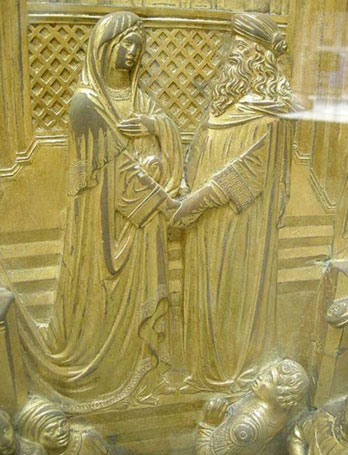
Malcolm Grant-Hutton’s Interpretation (The Tutankhamen Code)
The remaining text is the analysis of Malcolm Grant-Hutton [in quotations]. I will, however, also note that references are made to "The Kebra Negast" (which this writer has read) - now believed to be a mostly fake document. Make of it what you will.
“It was the Greek Egyptian historian Manetho’s who wrote, “Thus it came about that 80,000 unclean individuals were rounded up and dispatched to the stone quarries.” This is the same figure given in 1 Kings 5:15. The term ‘unclean’ was used to denigrate anyone not conforming to the writer’s own religious beliefs.”
“In year 10 of Solomon’s reign, he married a foreign princess named Gilukhepa and a Marriage Scarab was issued with these words, “Gilukhipa, persons in her harim: 317 women”. 1 Kings 11:3 gives it as 300 concubines, a very close match.”

“The Bible tells us that King Solomon’s father was King David. The father of Ymn Htp III (Amenhotep III) was actually named in separate hieroglyphs as DHWT, which has to be the same for it would have been spoken something like ‘Dayhut’. A shortcut hieroglyph was occasionally used, hence a different translation of ‘DJHWT’. Like many other names this sometimes had the letter ‘Y’ added on the end just as we do in English, and another suffix ‘Ms’ simply meant ‘Born of’.”
“The Kebra Nagast” names MenyELEk as the eldest son of Solomon and that he was also known as David. MenyELEk has the very same meaning as YmnTwtAnkh, better known today as ‘King Tut’. The Hall of Columns at Malqata, Luxor has the same length and breadth as the measurements given in 1 Kings 7:6, within two to three centimeters.”
“The clincher is in his name Ymn Htp III (Amenhotep III). Ymn, the God name for the setting Sun in the West was always written as ‘AMEN’, even in Greek letters, by Manethos who was still versant with the old Egyptian language. Hetep or Hotep was the Egyptian word for Peace or Rest, which at that time in Hebrew was Salim. As a Hebrew King of Egypt, his own family and his own people would have called him Salim Amen which evolved into Solomon. Foreign Kings ruling other countries speaking other languages and for many generations is not that unusual. Guillaume I of England is a case in point as is Georg I of England (who never spoke English.)”
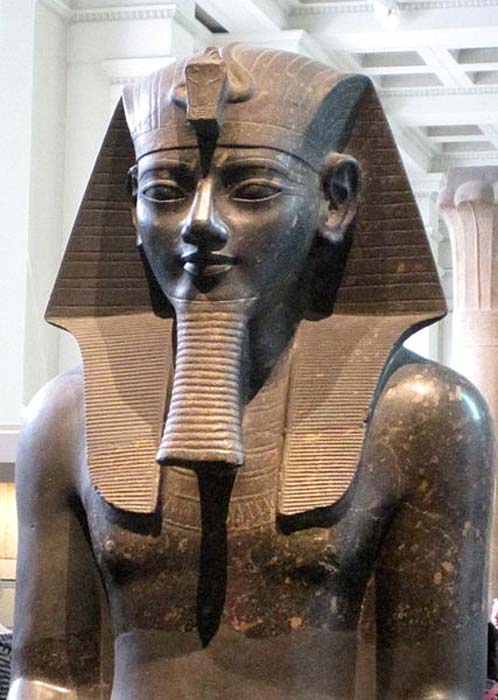
“Robert Feather in his “The Mystery of the Copper Scroll of Qumran” suggests that the Egyptian word ‘Heprew’ is the origin of the name Hebrew and this has to be true for the hieroglyph for Heprew (Creations) was a Scarab Beetle – in Greek ‘Scarabaeus’ – and this is what St. Ambrose called the mythical Ever Coming Son, IWSA – Iesous – in the 4th century AD.”
More Intrigue on Solomon and Sheba’s True Identities
“Ralph Ellis tells us in his “Jesus Last of the Pharaohs” that the names of Biblical patriarchs are nearly all those of other Egyptian Kings and some are even spelled exactly the same such as the Pharaoh Jacob. But there were also Kings called Joshua, Abel, Cain, Abram, Salah, Isaac, as well as Jacob, David, and Solomon. Ahmed Osman also notes in his book that both the Koran and Jewish traditions have it that Joseph’s brothers entered the City by different gates. Ancient Thebes, now Luxor, was renowned for its many Gates and Pylons and there wasn’t another city in those days that could compare.”

“It is quite surprising that not one Egyptologist has ever noticed the legend found by Sir Wallis Budge which tells us that Solomon’s Queen was an Abyssinian girl named Eteye Azeb and then realized that the name of Ymn Htp III’s Queen they translate as ‘Tiye’ should begin with an ‘E’. This vowel was never written in Egyptian but we now know that it was from the Ethiopian spelling. Syllables were often reversed in writing so Azeb has to be Zeba or Sheba. “The Kebra Nagast” even tells us that Solomon and Eteye’s son was called Meny EL Ek and that he was also known as ‘David’ which is ‘Dwd’ in Hebrew and ‘Twt’ or Tut in Egyptian. Both EL and TWT were seen as Moon Gods, which explains the variation from Ymn Twt Ankh to Meny EL Ek.”
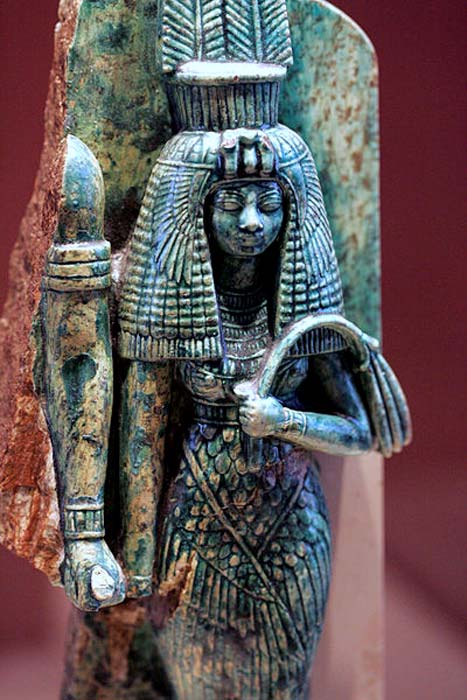
“We do know that the mother of Etiye, namely Tuya or Etuya, the wife of Joseph, came from the south and what is today Northern Sudan. That places a question mark over the lovely story told by Ahmed Osman about Ymn Htp having a pleasure lake built for Etiye at Zarw and presenting her with a Summer Palace. The loving Royal Couple ‘sailed there on the Royal Barge ‘Aten Gleams.’ Osman then places Zarw as being somewhat east of the Suez Canal, which would have been close to her Israelite relatives in Goshen.”
A Question of Location
“The problem with that location is that the King did build a lake in front of her Palace at Malqata, with a ‘T’ shaped channel running from the Nile at Luxor and terminating in a large harbor by the Palace. A marriage scarab commemorating this wonderful gift from the King to his wife gives its length as 3,700 cubits (about 1,020 yards), and breadth about 700 cubits. One kilometer is 1093.61 yards, which is near enough the same. Today a long line of hills marks the route of the Channel from the Nile to Malqata, each one once topped with a glorious shining Temple. Truly a Gift of Great Love.”
If you like this story, please subscribe and share, if possible
